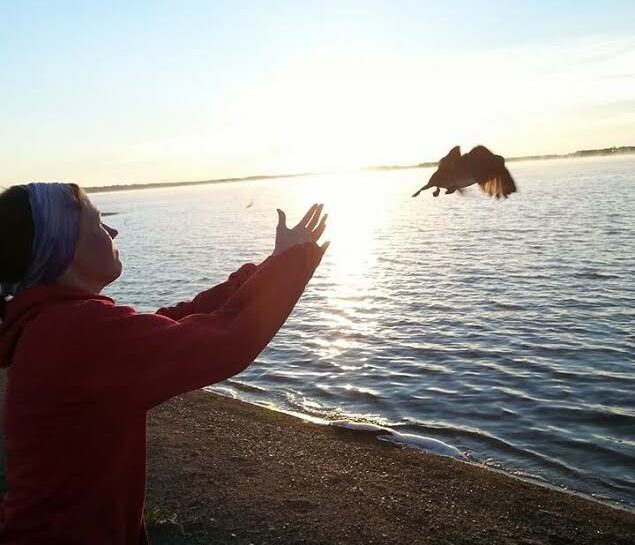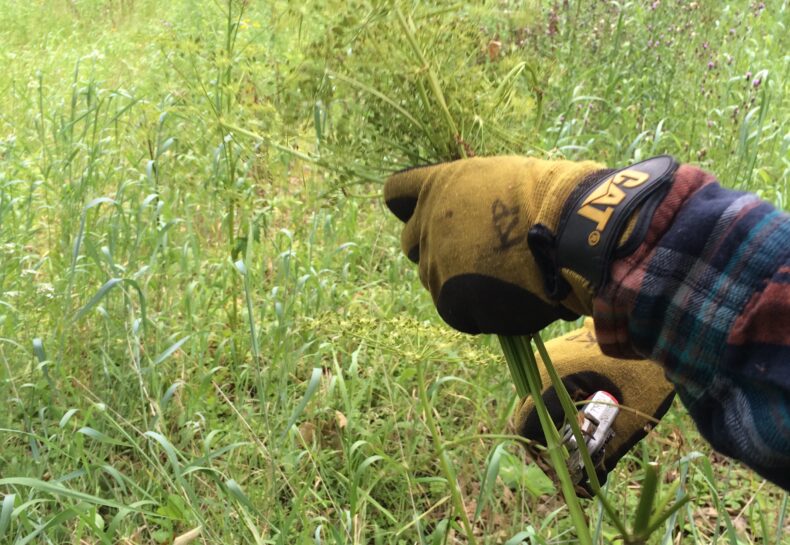Member Stories
A 28,000 word essay, of sorts
If a picture is really worth a thousand words, then I hope you’re ready to read a novel. (Actually it would be a novella, a novel requires over 40,000 words). But don’t worry, after a couple more short sentences you won’t have to read another single word.I’ve always tried to make a point of stopping to smell the flowers, hear the sounds, and see the sights when in nature. I haven’t figured out how to share the sounds and scents yet, but have a gander at the things my eyes have gravitated towards over the course of the summer months of this Conservation Corps term. I like flowers. Read More
Duck banding at 6 a.m.
As a whole, the Ottertail crew is not a morning crew. Every morning, without fail, we eat granola and bagels, because nobody will ever wake up to make hot breakfast. “Mrrmph” and “aaahm” are typical morning greetings. You can imagine the crew’s reaction when I announced our project hosts’ plan for duck banding of meeting up at 6 a.m. the following morning, a full hour earlier than usual, and head for the hills. Read More
Unstoppable forces and immovable objects
I have mentioned before the importance of believing in others to empower them. Now, I would like to elaborate my opinion on this topic. The thing that matters most to me in the world is how we treat other people. To me, it is important to treat each person with the same respect, dignity and kindness despite differences in accomplishment, status, self-respect, etc. I think to do so is treating people with the proper regard as human beings. By removing the lens of judgment from our view of others and how we treat them, it becomes possible to connect on a more fundamental level and appreciate others for who they are instead of what we or anybody else thinks they should be. This has very much set the tone for my work in classrooms and beyond. Read More
Start to finish
I used to be someone who had difficulty finishing the things that I’d started. What am I saying? I am someone who has trouble finishing the things I’ve started. Unlike some, I am incapable of mental revolution. The veritable coup d’état of my mind would certainly be a violent upheaval seeing as how the current regime has been deeply rooted since an early age. Gradual social reform has been taking hold however, in the depths of my consciousness. The proverbial “grind” has instilled in me follow-through, quality and pride in my work, without which calling a project finished would be the same as not starting at all. Read More
A battle in the war against biological warfare
Have you ever heard anyone say to just “let nature take its course?” Whoever first said it probably wasn’t speaking literally, nor did they understand the ecological implications of an invasive species on a native species. The infamous buckthorn, for instance, is just the tip of the iceberg in terms of invasive species. Many more continue to prosper and take over the land. Some of these invasive species, much like native species such as poison ivy, have certain defenses that are unfriendly towards humans. In the last few months I’ve had to learn how to identify poison ivy and other noxious weeds. In fact, for more than two weeks we spent our days armpit-deep battling against wild parsnip, which is an invasive weed that is quite hazardous to humans although its taproot is, in fact, edible. So what’s bad about wild parsnip? Read More
Bemidji crew works Agassiz National Wildlife Refuge
The sun rose quickly through a clear sky, burning off all the dew that settled earlier in the morning. We were walking through a wooden trail, following our project host in the Agassiz National Wildlife Refuge to look at the work site, when the woods suddenly opened up to a prairie like a sea of grass spreading outward, the horizon only broken here and there miles in the distance by aspen and oak forests. Our job was to help create an oak savannah landscape by painting herbicide onto the aspen trees in one section of the land. We became familiar with the location, ate lunch, and began painting trees that afternoon. Read More




